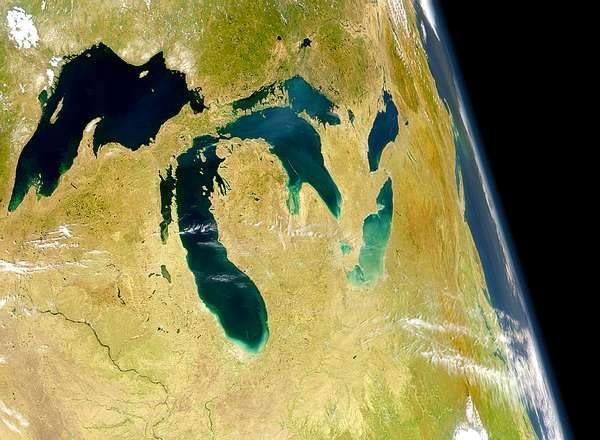Plastic Pollutes Great Lakes

Researchers who trawled Lake Eerie for floating debris say plastic pollution — already known to be a big problem for the world's oceans — could be getting worse in freshwater bodies like the Great Lakes.
Perhaps the most infamous example of plastic contamination in Earth's waters is the great Pacific garbage patch, known to scientists as the North Pacific Subtropial Gyre. While the nickname might conjure up images of bottles, bags, fishing lines and other trash rafted together and floating in a giant mass across the sea, most of the debris is microscopic.
And the same is true for Lake Erie. Researchers found that 85 percent of the particles they collected were smaller than two-tenths of an inch, in concentrations that varied from 1,500 to 1.7 million plastic particles per square mile.
Plastic can leach toxins into the water, and these substances also could enter the food chain when fish accidentally eat the tiny bits of garbage. Indeed, the team found plastic particles inside the stomachs of Lake Erie's fish.
"The main problem with these plastic sizes is its accessibility to freshwater organisms that can be easily confused as natural food," study researcher Lorena M. Rios-Mendoza, of the University of Wisconsin-Superior, said in a statement. She emphasized that it is not yet understood whether toxins from plastic are entering the food chain in harmful amounts in the lake, and the researchers are just starting to investigate whether the substances could be passed to consumers.
Plastics now account for 80 to 90 percent of ocean pollution, according to Rios, who said plastic production has increased 500 percent since 1980.
"The massive production of plastic and inadequate disposal has made plastic debris an important and constant pollutant on beaches and in oceans around the world, and the Great Lakes are not an exception," Rios added.
Sign up for the Live Science daily newsletter now
Get the world’s most fascinating discoveries delivered straight to your inbox.
In addition to typical trash items, plastic pollution can come from household products like abrasive facial cleaners and synthetic fibers, as well as the plastic pellets that shipped to manufacturers around the world to be turned into anything from milk jugs to car parts.
The research was presented this week at the meeting of the American Chemical Society in New Orleans.
Follow us @livescience, Facebook & Google+











